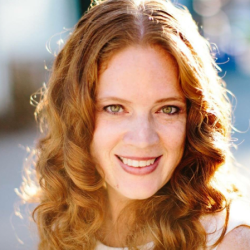
The Ontario French as a Second Language curriculum is a PBL teacher's dream: the expectations are simply that students read, write and communicate in French about familiar topics and in authentic contexts. It is up to the teacher to decide exactly what subjects, topics or projects are covered.
Or up to the students.
It was this realization that hit me while brainstorming about our next project for my beginner French classes. As I tried to conceive of an authentic use of language around the holidays, it occurred to me that perhaps I didn't need to choose the topic - the students could. It didn't really matter if they wanted to write holiday cards, organize a gift exchange, have a bake sale, or decorate the classroom; I could easily design a project around any topic of interest they showed. The students can read, write and communicate about any or all of these things. I could see my role as a teacher in a world language class evolving right in front of my eyes: my students choose the project, and I weave in the language learning.
Day 1:
I pitched the project, and the excitement was evident right away. I asked students to brainstorm all the possible activities around the holidays. The class came to life. Sticky notes filled the board. As students organized the notes by topic, we began to see two clear projects emerge. The first was a bake sale, the second was a secret Santa gift exchange. I told the students that I would take these two ideas and design a project around each one.
But that night, buoyed up by the participation and engagement I had seen that day, I decided that I could let go even more. They students had picked their projects, but they could design them also.
Day 2:
I shared my parameters of the project: each had to have three components, something they read (research), something they write (product) and something they communicate (interaction about the topic). I showed a sample yard sale project outline. Then students broke into their respective groups (bake sale, secret Santa) and began thinking about options for each component.
Students Lead Their Learning
I was running this project in two different French classes, and while they both had landed on the same overall topics (popular ones for 12 year olds!) they ended up designing completely different projects. One bake sale group decided to write recipes, while the other decided to design advertising posters. One Secret Santa group opted to write and read aloud holiday cards, while the other class chose to practice pitching the project to our principal (who happens to speak French). Seeing the same project evolve in different ways demonstrated to me that there are many effective ways to study and learn.
By the end of day 2 I was hooked. I started looking for more opportunities to let the students lead their learning. The next step in a language class would be to equip the students with appropriate vocabulary. I altered my original plan of supplying that list by instead asking them to write me out a list of English words they expected they would need, and I would provide the translations. My role emerged clearly: I created organizers to help in planning, and mini lessons to teach the grammar the students would need to complete their projects. They would lead, and I would provide language support.
Lessons Learned About My Role—and How Much Time Projects Take
There have been bumps along the way. Responding to student voice means that I can’t plan everything ahead of time. Instead, I used my planning time to search out authentic texts and resources and familiarize myself with different types of graphic organizers. This helped me to respond to student needs as they emerged. Sometimes that time crunch meant that I didn’t provide the perfect planner or I pushed the students beyond what they were ready for. I had to back up several times to scaffold the learning in greater detail to ensure student success. But what I learned was that these bumps were not detrimental to their learning, just another step toward standards mastery.
There is also the challenge of time, time, time. I looked down the long, two-month timeline before the holidays and thought it was more than enough... and in fact I found myself stressing as the weeks ticked by and we were stalled in one area of learning. What I have learned is to start early and assume you need at least half as much time again as you have planned. There are always opportunities to go deeper; it’s much more difficult (and detrimental) to scale back or rush through.
Seeing the Freedom in Our Curriculum
When we look at the curriculum provided to us by the powers above, we can fall into the trap of seeing it as a forced pathway. But sometimes we as teachers get caught up in what we think our curriculum is asking of us as opposed to what’s really there. As I studied my own French curriculum, I started asking myself what parameters are really there, and which ones have I imposed myself? How specific are the expectations, and where is there room for movement? I started to see the freedom that exists, and now I have turned that freedom over to my students to give them a voice in what they learn, and choice in how they do it.
Point to ponder: What parameters do you have that are self-imposed? In what ways might you let them go?
Want to learn more about PBL? Check out our books.
Register now for PBL World 2024.

